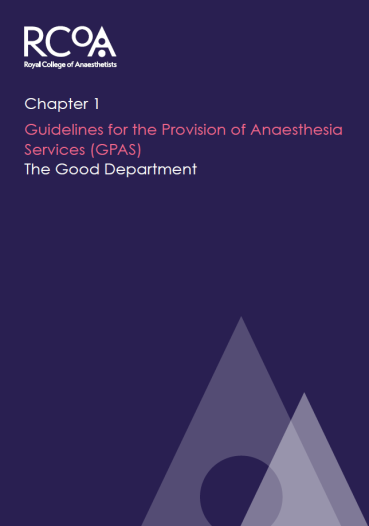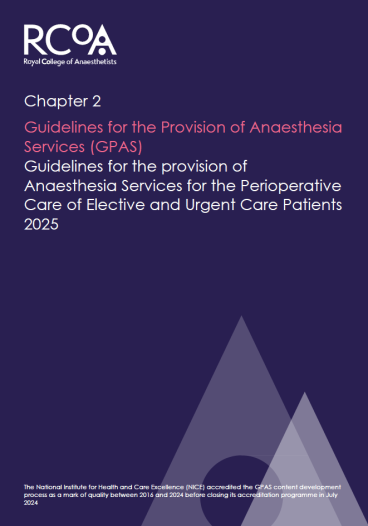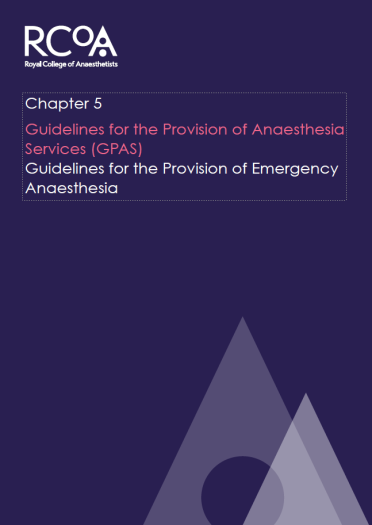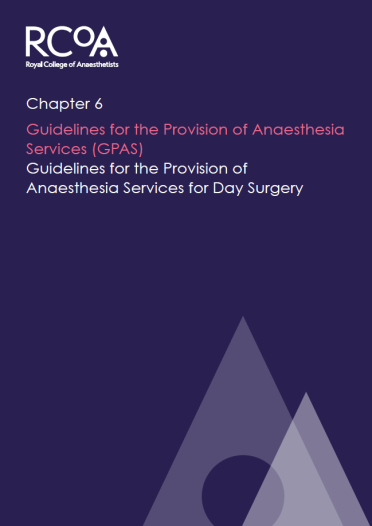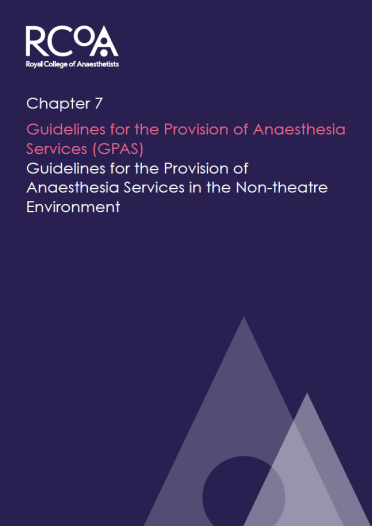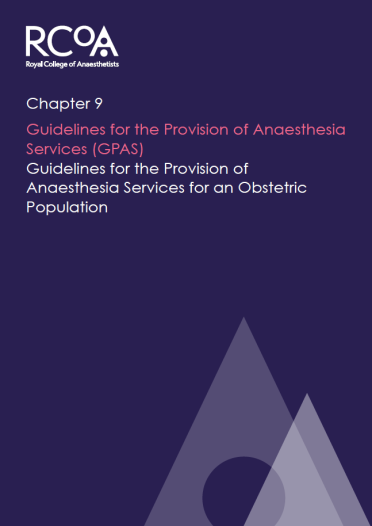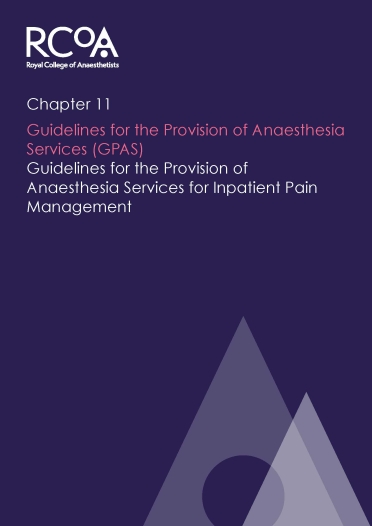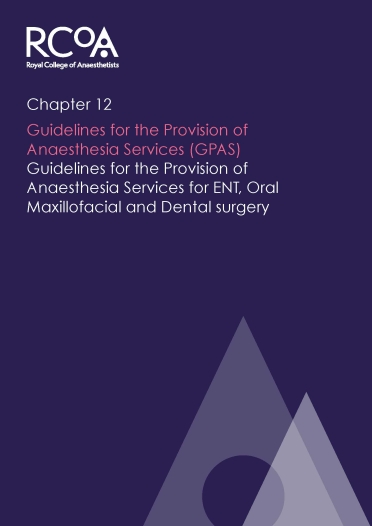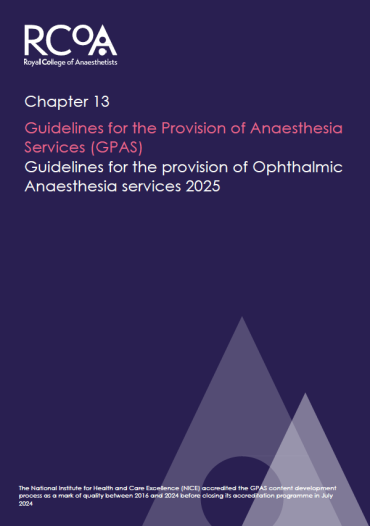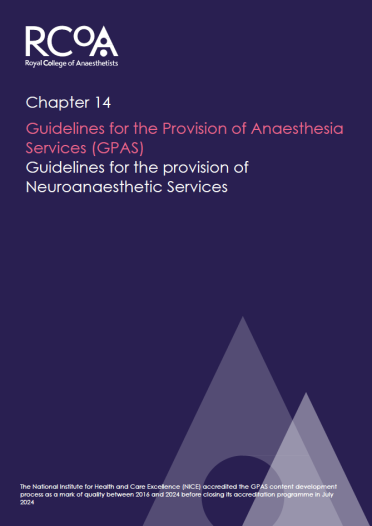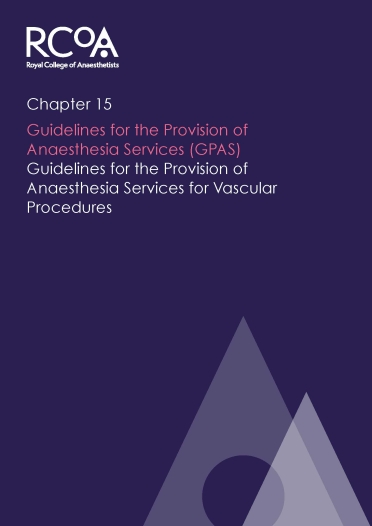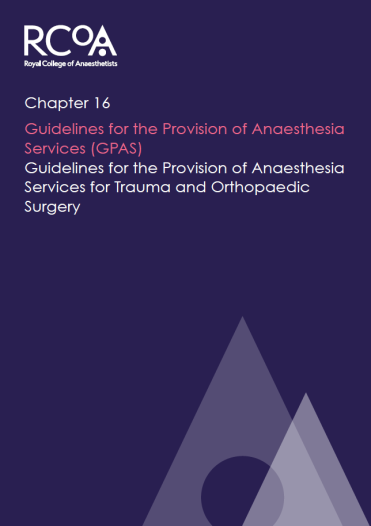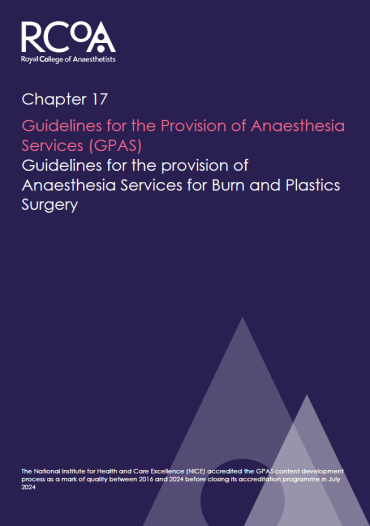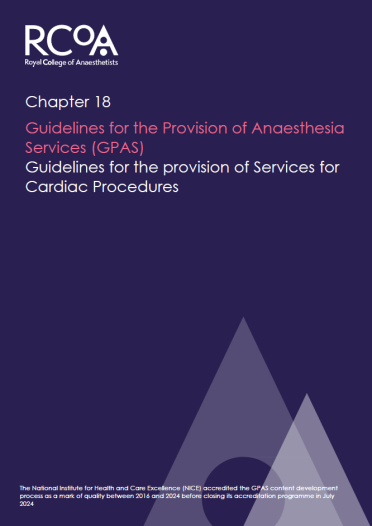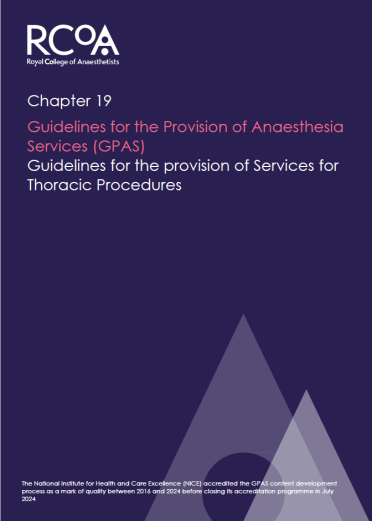Guidelines for the Provision of Anaesthetic Services
The Guidelines for the Provision of Anaesthetic Services (GPAS) support anaesthetists with responsibilities for service delivery and healthcare managers to design and deliver high quality anaesthetic services. It is developed using a rigorous, evidence-based process, with input from a range of stakeholders.
Each of the GPAS chapters should be seen as independent but interlinked documents. Guidelines on the general provision of anaesthetic services are detailed in GPAS chapter 1: The Good department and GPAS chapter 2: Guidelines for the Provision of Anaesthesia Services for the Perioperative Care of Elective and Urgent Care Patients.
These guidelines apply to all patients who require anaesthesia or sedation, and are under the care of an anaesthetist. For urgent or immediate emergency interventions, this guidance may need to be modified as described in GPAS chapter 5: Guidelines for the Provision of Emergency Anaesthesia.
Chapter 2
Guidelines for the Provision of Anaesthesia Services for the Perioperative Care of Elective and Urgent Care Patients
Chapter 12
Guidelines for the Provision of Anaesthesia Services for ENT, Oral Maxillofacial and Dental surgery
We welcome comments and advice from clinicians and managers to enable new information obtained from audit and research to be incorporated into GPAS, so that the College’s guidance reflects and supports best practice.
Statement of intent
These documents are for guidance only. They are not intended to replace the clinical judgement of the individual anaesthetist, and the freedom to determine the most appropriate treatment for individual patients in a particular place at a specific moment should not be constrained by a rigid application of this guidance.
Each chapter is written with best practice in mind and referenced to recommendations from national bodies. It is the responsibility of the individual reader to take into account particular local circumstances when applying the recommendations of each chapter.

